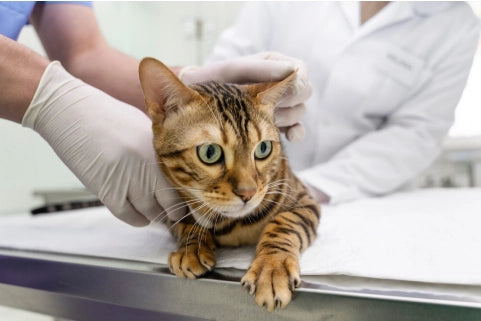The Rabies Virus: A Fatal Threat to Cats
Rabies, a pernicious virus, assails the central nervous system of mammals, including our feline companions. With a progression that leads inexorably to death within days of symptom onset, it remains an urgent concern in public and veterinary health. A zoonosis, rabies holds the grim potential of crossing species barriers, affecting humans as fatally as it does animals.
The Onslaught of Symptoms in Feline Rabies
Rabies may manifest a changing tapestry of symptoms, with initial behavioral alterations like withdrawal or uncharacteristic agitation, leading to more severe signs including paralysis and the production of excessive saliva, due to an inability to swallow.
Perilous Pathways: Rabies Transmission in Cats
Transmission occurs through the inoculation of infected saliva via bites, advancing insidiously through the nervous system to the brain. The incubation, variable in duration, eventually culminates in an outward explosion of symptoms once the salivary glands are commandeered by the virus.
The Intricacies of Diagnosing the Undiagnosable
In life, rabies eludes definitive detection in cats; only post-mortem examination of brain tissue brings certainty. For humans, while certain tests are available, they falter in reliability compared to the post-symptomatic reality.
The Tragic Inevitability: Rabies Treatment and Euthanasia
Antidotes elude us; thus, our hands are tied to provide any cure. Animals exhibiting rabies’ harrowing end stages must be humanely relieved from their agony to curtail the virus’s cruel spread. Humans, on the brink of symptoms, can cling to hope through urgent post-exposure immunization, but this window of opportunity is fleetingly narrow.
Proactive Defense: Rabies Prevention in Cats
The linchpin of rabies prevention lies in vaccination, with regularity dependent upon legal and health contexts. Responsible pet ownership extends to vigilant supervision and the avoidance of encounters with unknown animals or wildlife. Humans, too, can arm themselves with pre-exposure vaccination, particularly those at the forefront of wildlife interaction or in endemic regions.
The Imperative of Awareness and Rapid Response
Equally vital to vaccination is the education on what to do when an animal bite occurs. Procuring information on the biting animal and immediate medical consultation are paramount. For society at large, the drumbeat of rabies awareness cannot fade; for its echo carries the weight of prevention.
In Conclusion: Safeguarding Against the Ravenous Reach of Rabies
Rabies remains unyielding in its finality, yet entirely preventable. Ensuring our cats are vaccinated and minimizing exposure risks are simple yet powerful steps we can take. Understanding rabies’ nature, its signs, and the means to prevent it is our shield, safeguarding not just our treasured pets but our families, our communities, and ourselves.























































